Few American cities are as steeped in history as New Orleans. The city was founded by the French, once controlled by the Spanish, and ultimately the site of some of America’s most popular historical stories, battles, and characters highlighted by its vibrant Creole culture.
Disclosure: Some links on our site are affiliate links. If you purchase a linked item, we will make a commission, at no extra charge to you.
French Quarter
While this is a broad area, the entire French Quarter is historical. Buildings that may be unnamed on any tourism maps are still homes and businesses, but their architecture has told passersby stories for centuries. The perfect way to begin your historical tour of New Orleans is simply roaming the streets and shops of the French Quarter. You will likely roam past some of the suggestions below while you walk.
Boulevardier: to get dressed up and stroll the French Quarter
Bourbon Street
Dating back to 1718, when the streets of New Orleans were laid out as the city was founded. The French engineer Adrien de Pauger was responsible for laying out the streets and chose to carry the name of the French royals at the time to the city with Rue Bourbon.
The street became an entertainment strip in the late 19th century. While the street used to be one of the most populated areas with Middle-income families that gave way to entertainment, jazz, and bars.
Some musicians who got their start on Bourbon Street: Chris Owens, Aaron Neville, Dr. John and Louis Prima, and dozens more.
The street cuts through. 13 blocks of the French Quarter.
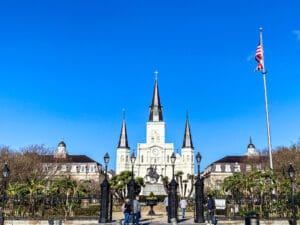
Jackson Square
Originally known (in the 18th century) as Place d’Armes, the square was later renamed in honor of the Battle of New Orleans hero Andrew Jackson. Noted with the central statue of a horseback Jackson.
The historic landmark is tile surrounded by more history with the Cabildo and St Louis Cathedral offering a backdrop to the square. To the side, you will find the lower and Upper Pontalba Apartments, the oldest apartments in the United States. Now they offer retail shops and restaurants.
Grab your beignets at Du Monde (across the street) and stroll the open-at artist colony at Jackson Square. The colony began well over half a century ago.
The Cabildo
This elegant Spanish colonial building was built under Spanish rule around 1795 and now houses many rare artifacts of America’s history under the Louisiana State Museum. While the Great New Orleans Fire of 1788 completely destroyed the building, it was rebuilt under a new design by Gilberto Guillemard. Guillemard also designed the neighboring St. Louis Cathedral.
The Cabildo was the site of the Louisiana Purchase transfer in 1803. This finalized the acquisition of the Louisiana Territory and doubled the size of the fledgling nation.
The Cabildo went on the serve as the center of government in New Orleans until 1853, when it became the headquarters for the Louisiana State Supreme Court. It was within these walls that the landmark Plessy v Ferguson (https://en.wikipedia.org/wiki/Plessy_v._Ferguson) decision originated in 1892.
The building was transferred to the Louisiana State Museum in 1908.
The structure was severely damaged in a 1988 fire. Within five years it was authentically restored with 600-year-old French timber framing techniques. It reopened as a museum in 1994.
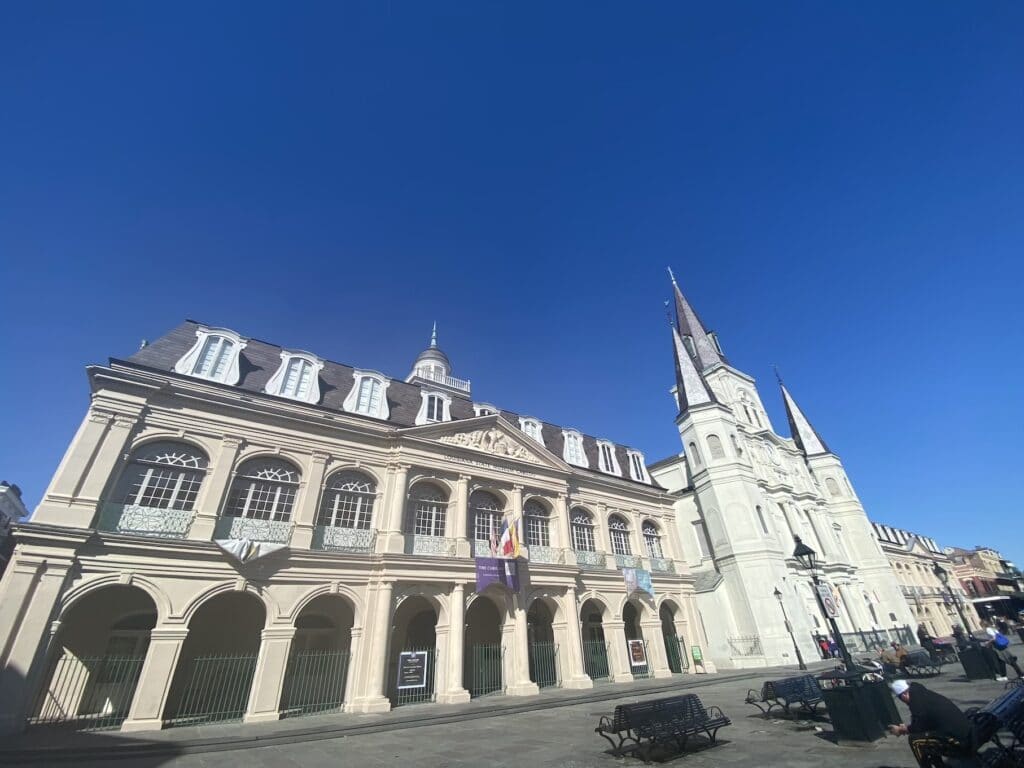
St. Louis Cathedral
One of New Orleans’ most notable landmarks, the cathedral is the oldest in North America. The triple steeples tower above the neighboring structures has withstood the test of numerous storms. Step inside to see the ornate interior.
Old Ursuline Convent
The oldest building in the Mississippi Valley and constructed by French Colonial Engineers under the auspices of the crown, the convent was constructed in 1752. The structure has been a convent of the Ursuline nuns, a school, an archbishop’s residence, the archdiocesan central office, a meeting place for the Louisiana Legislature, a residence for priests, and housed the Archdiocesan Archives. Today it forms the Catholic Cultural Heritage Center of the Archdiocese of New Orleans.
The facade is a simple twelve bays on two floors with an attic level made of three dormers. Using a brick-between-post construction covered by white plaster to simulate stone on the corners and central bay.
“This is the finest surviving example of French Colonial public architecture in the country, Louis XV in style, formal and symmetrical, with restrained ornament. – National Parks Service, (October 9, 1960, designation of the convent as a National Historic Landmark)
Congo Square
To the left of the main gate of Armstrong Park sits Congo Square. The open space is where enslaved and free people of color gathered throughout the 19th century for meetings, open markets, and African drumming and dance celebrations. The square played a substantial role in the development of jazz.
Local voodoo practitioners still consider it a spiritual base and gather there for rituals.
Dooky Chase’s Restaurant
While in the Tremé for Armstrong Park, swing by Dooky Chase for lunch or dinner. Legendary Creole chef Leah Chase made this corner restaurant into the meeting place for music, entertainment, civil rights, culture, and amazing food in New Orleans.
Check with the restaurant as a dress code is enforced. If you’re not dressed for Dooky Chase check out our New Orleans Restaurants article for other options in the Tremé.
St. Louis Cemetery No 1
Established in 1789, St. Louis No 1 holds the distinction of being the oldest extant cemetery in the city. Initially constructed as a temporary burial site, but was soon approved as a per eminent site by Spanish royal decree on August 14, 1789. The cemetery was listed on the National Register of Historic Places in 1975 as having a national level of significance in the areas of art and architecture. It was later added to have significance as part of the African American Heritage Trail by the State of Louisiana in 2008 due to the number of historically significant African Americans interred there.
You will need to take a tour of the cemetery. The guided tours are meant to protect the tombs from vandals.

Lafitte’s Blacksmith Bar
Built in 1722 the building is one of the oldest surviving structures in New Orleans. According to legend, privateer Jean Lafitte and his brother Pierre owned a business here.
The building was declared a National Historic Landmark in 1970 due to its rare example of briquette-entire-plateaux construction.
Discover more about Lafitte’s Blacksmith Shop in our recent article.
Pierre Maspero’s
The building has been a slave exchange, coffee house, and meeting place. Just before the Battle of New Orleans, the building was used as a meeting place for then General Andrew Jackson and Jean and Pierre Lafitte.
The meeting resulted in the help the privateering brothers and their crew offered America during the Battle of New Orleans. Their assistance was instrumental in winning the battle and resulted in pardons for them (until they committed more crimes).
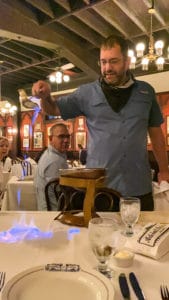
Antoine’s Restaurant
Still owned and operated by the fifth generation of the original owner, Antoine Alciatore. The restaurant has long been a favorite for its world-renowned French-Creole cuisine, impeccable service, and atmosphere. The birthplace of classics like Oysters Rockefeller, Eggs Sardou, and Pommes de Terre Soules.
The Cafe Brulot is a must-try while enjoying the restaurant. The flaming coffee drink is also known as “Devil’s Coffee” and includes oranges, brandy, cloves, and, of course, fire.
Wander to the back room to view the 16,000-bottle wine cellar and incredible collection of bourbons.
Napoleon House
The home was offered to Napoleon during his exile by New Orleans mayor, Nicholas Girod in 1821. Although Napoleon never made it to the home, the name did stick. Although the 200-year-old landmark has long been a gathering place for great food and art.
Garden District
From single-story small homes to grand historic mansions, oak-shaded streets and the Mardi Gras parade route make this area a great place for a stroll to enjoy the architecture and lavish gardens.
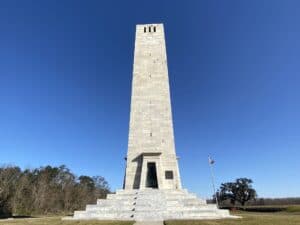
Chalmette Battlefield
Located in the Jean Lafitte Historical Park and Preserve this is the site of the Battle of New Orleans in 1815. The park contains a reconstructed American rampart, an 1830s house, a 100-foot-high Chalmette Monument, and exhibits detailing the events of the battle. Including the Beale Riflemen.
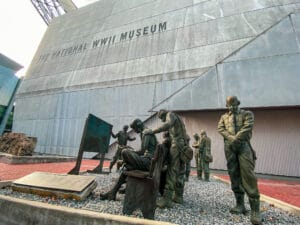
World War II Museum
Although not inside a historic building, history lovers cannot miss The National WWII Museum. The museum tells the story of the American Experience in the war that changed the world.

